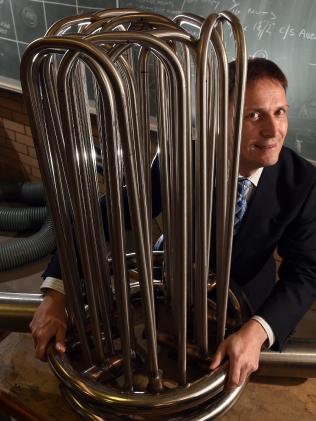The University of South Australia researchers behind a low-cost energy storage solution that uses salt to store excess electricity have been honoured in Australia’s top science awards, winning the ANSTO Eureka Prize for Innovative Use of Technology.
The “phase change” energy storage technology, which has been patented and commercialised by Glaciem, uses surplus electricity – say from rooftop solar panels – to freeze salt compact coils inside a purpose-built storage tank, not unlike the old-style electric hot water heaters many Australians still have installed at their houses.

When that stored energy is needed – say, when the sun goes down, or when grid electricity prices go up – the compact coils release it through melting the salt.
Of course, the notion of using salts for energy storage is not a new one. Molten salt batteries are used at a number of large-scale solar thermal farms, including the world’s biggest solar tower and storage plant, the 110MW Crescent Dunes facility in Nevada, US.
And sodium-ion batteries are widely considered to be a contender to compete with, or replace, lithium-ion technology as the great new battery hope.
But the use of salt as a phase-change material for smaller-scale, rapid-discharge batteries for residential and commercial use – and at a cost of up to 10 times cheaper than batteries – is, apparently, unprecedented.
According to UniSA mechanical engineer, Associate Professor Frank Bruno, his team’s salt-based energy storage system has the advantage over other battery technologies currently on the market, because it is cheap, relatively compact for the amount of energy it can store, rapid discharge, and doesn’t eventually go flat.
He says in a demonstration video that the team used a “novel concept” to stabilise their phase-change materials, ensuring long life and improved responsiveness.

“The key was getting the price down, to try to develop energy storage that is effective and cheap,” Bruno told the Adelaide Advertiser.
“This energy storage technology can be used for refrigeration, or air conditioning for homes, or solar power plants, so, yes, it is a big change,” he said.
A full-scale commercial version of the technology is already being used at a farm in Australia, according to Bruno – not to store excess solar, but to store cheap electricity from the grid overnight, and then use that to power the farm’s cool rooms during the day, he told ABC Radio Nationals’ breakfast program.










